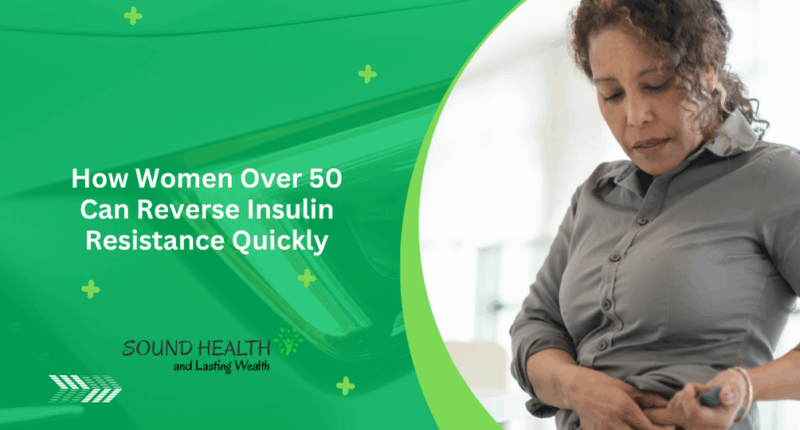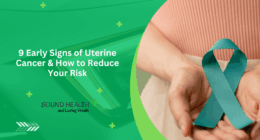Insulin resistance is a hidden hormone problem affecting about half of women over 50, often unnoticed yet impactful on overall health. With age, many women face this metabolic challenge that silently increases the risk of serious health conditions such as type 2 diabetes, heart disease, and weight gain. Recent research in the Journal of Mid-Life Health shows that as many as half of all postmenopausal women have the sneaky hormonal condition. Understanding what insulin resistance is, why it becomes common after 50, recognizing its subtle symptoms, and knowing how to reverse it naturally can empower women to regain their health and vitality quickly.

What is Insulin Resistance?
Insulin resistance occurs when the body’s cells become less responsive to insulin, a hormone that helps regulate blood sugar levels. Normally, insulin helps sugar enter cells to be used for energy. When cells resist insulin, glucose remains in the bloodstream, causing elevated blood sugar and triggering the pancreas to produce more insulin. Over time, this imbalance stresses the body and leads to metabolic disorders. For women over 50, this hormonal shift is compounded by changes related to menopause and aging that reduce insulin sensitivity significantly.
Why Insulin Resistance is So Common After 50
As women transition through menopause, hormonal fluctuations—especially declining estrogen—significantly alter metabolism and body composition. These hormonal changes lower insulin sensitivity, meaning the body’s cells no longer respond efficiently to insulin. Combined with factors like reduced muscle mass, increased abdominal fat accumulation, and lifestyle habits that tend to change with age, insulin resistance becomes prevalent. Research shows about half of postmenopausal women exhibit insulin resistance, increasing their vulnerability to diabetes and cardiovascular disease.
The 5 Sneaky Symptoms of Insulin Resistance Every Woman Should Know
Insulin resistance can be difficult to detect because its signs are subtle and often dismissed as normal aging. However, recognizing these symptoms early can prevent progression to more serious health issues:
- Unexplained weight gain, particularly around the abdomen
- Fatigue and low energy despite adequate rest
- Frequent hunger or sugar cravings
- Brain fog or difficulty concentrating
- Skin changes such as dark patches (acanthosis nigricans), especially on the neck or underarms
Many women attribute these symptoms to aging itself, but they signal underlying metabolic disruption requiring attention.
Easy Ways to Reverse Insulin Resistance Naturally
Reversing insulin resistance does not always demand medication and can start efficiently with lifestyle changes. Here are practical, natural strategies proven to improve insulin sensitivity:
- Adopting a balanced diet rich in fiber, lean proteins, and healthy fats while reducing refined carbohydrates and sugars
- Engaging in regular physical activity, especially strength training and cardiovascular exercises, to enhance muscle glucose uptake
- Prioritizing adequate, quality sleep to support metabolic health
- Managing stress through relaxation techniques like meditation or yoga, which help regulate hormones
- Maintaining a healthy weight with gradual, sustainable changes
These measures can dramatically improve how the body responds to insulin, often within weeks to months with consistent effort.
How to Know if You’re Improving Your Insulin Sensitivity
Tracking progress can be motivating and clinically useful. Improvement in insulin sensitivity is typically reflected by:
- Reduced waist circumference and better weight management
- Increased energy levels and decreased cravings
- Improved blood sugar readings on routine tests
- Noticeable fading of insulin resistance-related skin changes
- Enhanced mental clarity and mood stabilization
Healthcare providers may also use laboratory tests like fasting insulin and glucose levels, or indices such as HOMA-IR to quantitatively monitor changes. Regular check-ups and open communication with a medical professional will ensure efforts to reverse insulin resistance are on track.
Conclusion
Insulin resistance affects nearly half of women over 50 though it often goes unrecognized. Understanding its nature, becoming alert to its subtle signs, and adopting targeted natural lifestyle adjustments can reverse this condition rapidly and effectively. For women seeking renewed health and energy after 50, addressing insulin resistance is a powerful step toward long-term well-being.
Also Read | Why Does Waking Up Feel Hard? Sleep Inertia Explained And How To Fix It










